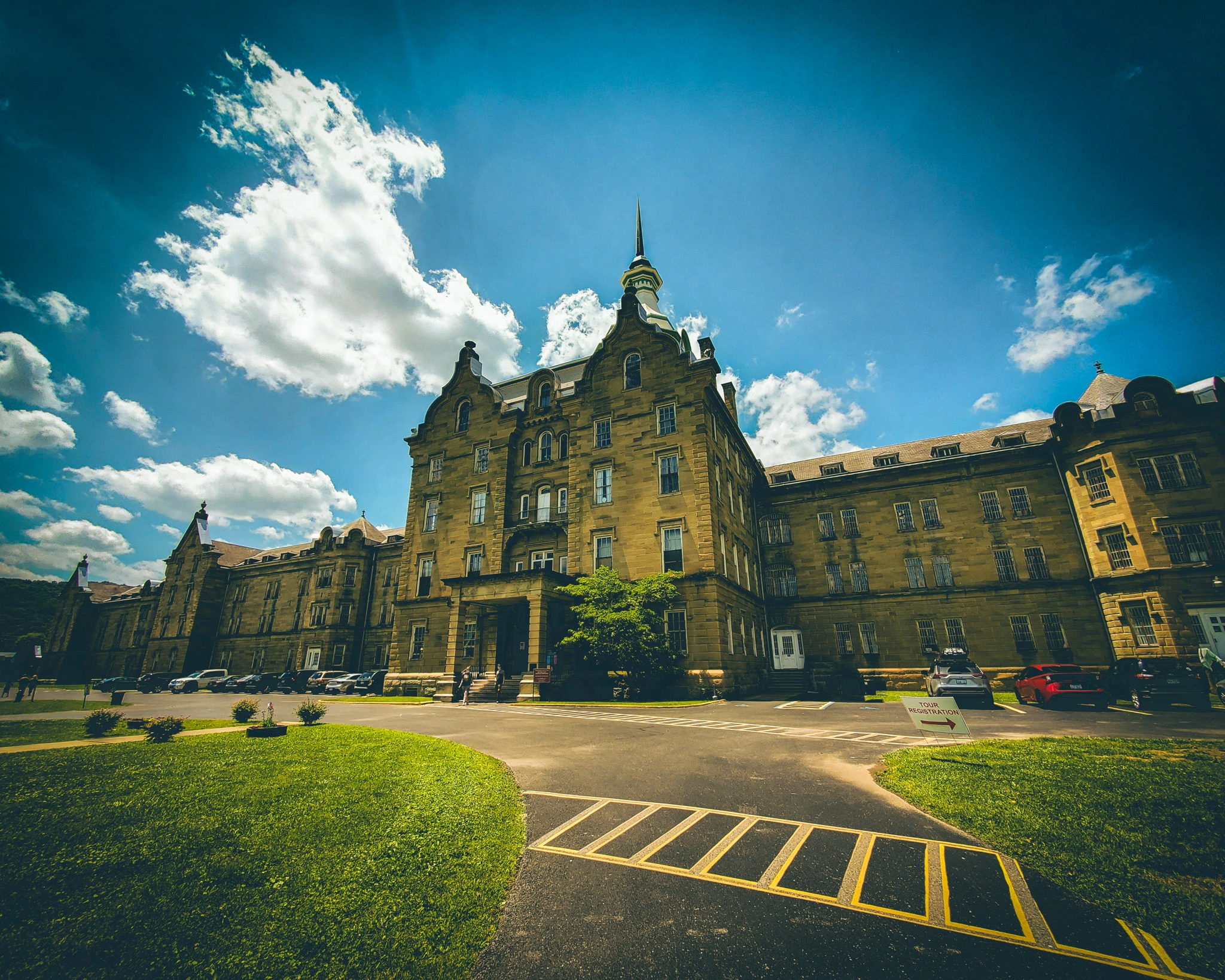Nestled in the picturesque hills of West Virginia lies a place steeped in history and mystery: the Trans-Allegheny Lunatic Asylum. In July of 2022, I had the unique opportunity to visit this iconic landmark, delving into its storied past and uncovering the eerie tales that linger within its walls.
A Brief History of Trans-Allegheny Lunatic Asylum
Constructed between 1858 and 1881, the Trans-Allegheny Lunatic Asylum was once one of the largest mental institutions in the United States. Architect Richard Andrews designed the asylum in the Gothic Revival style, intending to provide humane care for the mentally ill—a stark contrast to the harsh treatments prevalent at the time.
The Rise and Fall of the Trans-Allegheny Lunatic Asylum
Initially built to accommodate 250 patients, the asylum quickly became overcrowded, housing over 2,400 individuals at its peak in the 1950s. Despite its noble intentions, the asylum faced numerous challenges, including inadequate funding and outdated treatment methods. By the mid-20th century, the facility had gained a reputation for its overcrowding, understaffing, and reports of patient mistreatment.
Exploring the Grounds of the Trans-Allegheny Lunatic Asylum
Stepping onto the sprawling grounds of the Trans-Allegheny Lunatic Asylum is like stepping back in time. From the imposing façade of the main building to the tranquil beauty of the surrounding landscape, every corner exudes an air of mystery and intrigue. Guided tours offer visitors a glimpse into the asylum’s past, with knowledgeable guides leading the way through its labyrinthine halls and echoing corridors.
Haunted Legends
As night falls, the atmosphere at the asylum takes on a decidedly eerie tone. Over the years, the lunatic asylum has gained a reputation as one of the most haunted places in America. Countless tales of ghostly encounters and paranormal activity have emerged, fueling the fascination of paranormal enthusiasts and thrill-seekers alike.
Personal Experience
During my visit to the insane asylum, I couldn’t shake the feeling of being watched as I explored its shadowy corridors. From the peeling paint to the creaking floorboards, every sound seemed to echo with the whispers of the past. Despite my skepticism, I couldn’t deny the palpable sense of unease that hung in the air.
Preservation Efforts
In recent years, preservationists and restoration experts have actively worked to preserve and restore the Weston Asylum. Restoration projects aim to highlight the asylum’s historical significance while honoring the memory of those who lived and died within its walls. Events such as haunted tours, paranormal investigations, and historical reenactments help support ongoing preservation efforts while offering visitors a unique and immersive experience.
A Window into the Past
The Trans-Allegheny Lunatic Asylum stands as a testament to the complexities of mental health care throughout history. From its grand architecture to its troubled legacy, it serves as a reminder of the importance of compassion, understanding, and progress in the treatment of mental illness. Whether you’re drawn to its historical significance or intrigued by its haunted reputation, a visit to the asylum is sure to leave a lasting impression. As I reflect on my own experience, I’m reminded of the power of places to both captivate and haunt the imagination, leaving us to ponder the mysteries of the past long after we’ve returned home.



